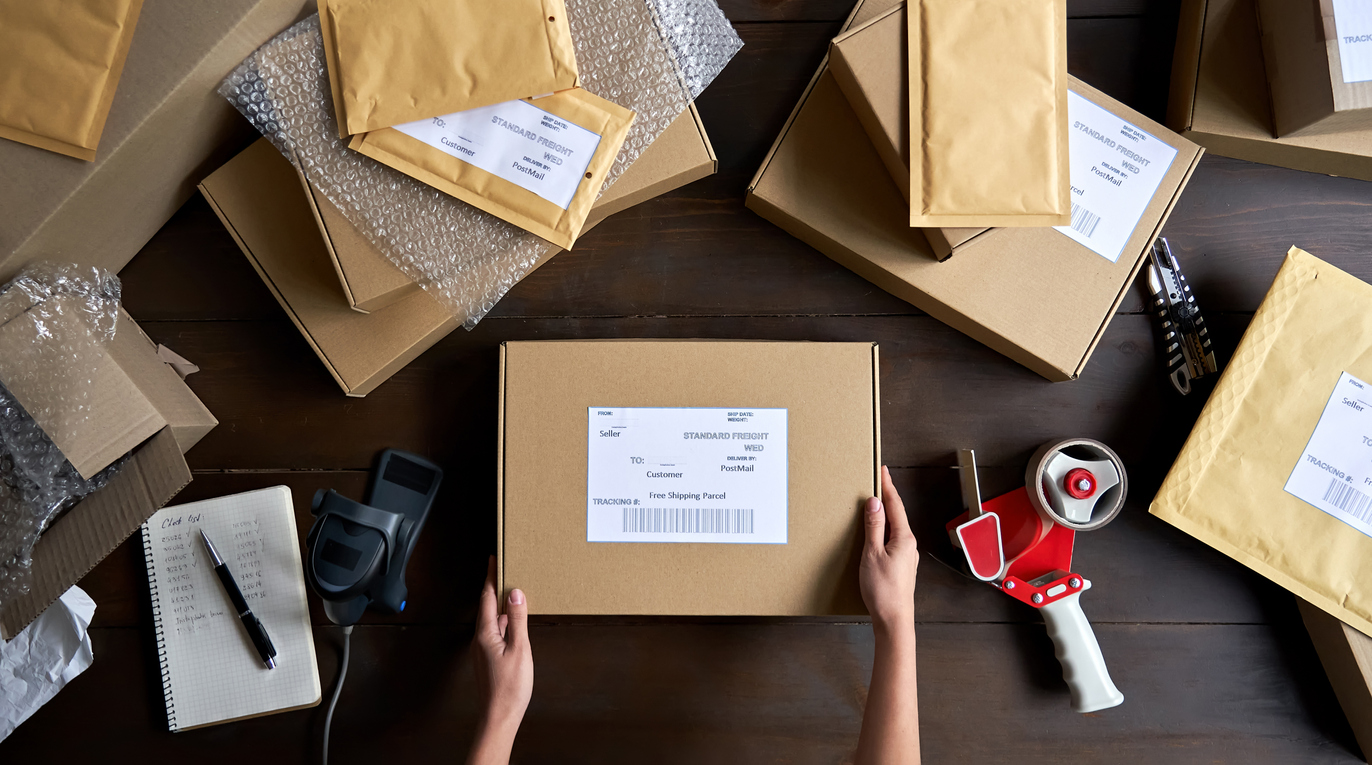A guide to shipping products as a small business in Australia
Undoubtedly, small businesses continue to dominate the Australian economy, with studies revealing nearly 98% of all Australian businesses are considered small businesses – meaning they employ less than 20 people. Notably, 62 % of Australian businesses are sole-traders, which means the business owner runs the whole show and doesn’t have any employees.
As a small business in Australia, how you manage shipping, fulfilment and returns has the potential to make or break your venture. Today’s consumers expect their orders to arrive faster than ever. They also have a higher expectation of how their products arrive and – particularly for fashion or higher-end items – the kind of unboxing experience a brand offers. This means that you must understand the ins and outs of shipping and ensure the delivery of customer orders is quick, safe and affordable. While the COVID-19 pandemic continues to place a significant strain on delivery and fulfilment operations both locally and internationally, particularly when it comes to delivery timeframes, this blog focuses on shipping optimisation tips for small businesses and some steps to take that can save on shipping costs.
4 Tips to Optimise Your Shipping Processes
1. Choosing your courier
The first step to successful shipping is to select the ideal courier. It is crucial to partner with a shipping company that you can trust to deliver to the customer safely and on time (noting the current state of play regarding delays). Their delivery rate should also be affordable without compromising on quality. Some of the other factors to consider when choosing a courier include:
- The cost and ease of quoting
- The capacity and ability to handle an appropriate range of parcel shapes, sizes, and weights
- What your customer prefers to use, for example, express delivery
- The other services the courier offers such as logistic management, online integration, and advanced reporting
- Contract agreements
- Insurance options
- Interstate/overseas delivery options and the assistance offered with those.
Some of the courier options that offer parcel delivery for small businesses in Australia include MyPost Business, Allied Express, StarTrack, BHF Couriers, DHL, Aramex, and more. You’ll also find smaller courier services that operate just within your region that may be better suited to your offering.
2. Setting shipping prices
Once you have picked your courier, calculate how much you should charge (or not charge) your customers for delivery. Keep in mind what your business can afford regarding shipping charges. Some of the available options when deciding on the shipping rates include:
- Free shipping: You can offer free shipping if you determine the associated costs won’t eat much into your profit margin. Free shopping can be a powerful marketing tool to attract more customers. However, free shipping may not be ideal with larger and heavier products. These products typically are expensive to ship, meaning you will lose a substantial profit margin with free shipping.
- Charging a flat rate: With a flat-rate shipping method, customers pay a fixed charge during checkout instead of paying for a specific shipping cost within the product. This method helps reduce costs for the customer because the shipping cost is only applied once and not attached to each product. The flat rate method works if the majority of your products are of similar size and weight.
- Tiered rates: Tiered rates allow you to combine both free shipping and flat rates. With this method, customers pay some percentage of the delivery costs for smaller, less profitable orders while enjoying free delivery for larger, more profitable orders. The tiered rate method encourages customers to purchase goods in bulk to enjoy free delivery.
3. Packaging customer products
The ideal packaging should keep your customer’s orders safe during the delivery while contributing substantially to the overall customer buying experience. A carefully crafted and personalised unboxing experience could leave the right impression on the customer. Packaging goods the right way can help save money by optimising space. It also ensures you won’t have to ship replacements for damaged goods. Some of the things to consider when packaging items for shipment include:
- The weight of the item: Heavier products need more robust packaging material and vice versa. Check the manufacturer’s stamp on the box to determine the strength of the box. The trick is to pack heavier items with double or triple-layered corrugated cardboard boxes and lighter ones with a polyurethane bag.
- Size and shape of the product: When using a box, ensure there is adequate space for cushioning material. This means the item being packed should not be touching the sides of the box. If you are shipping items non-fragile items with no fixed shape like clothes, consider packaging it with a polyurethane bag with some packing tissue
- Value of the product: Fragile, high-value items need additional cushioning and protection. Choose a packaging box that is only slightly larger than your product and wrap the item safely in cushioning material. Where necessary, encase the item in a form or use air pillows for added protection. Additionally, add a “fragile” label to the box for the courier to know they have to handle the box with care.
4. Consider selling on eCommerce platforms
If you are a solo operator, consider selling your products through sites like Etsy, eBay, Amazon and others, rather than setting up your own website from scratch. Although sites such as eBay and Amazon recommend default shipping, you can still control who delivers your products by selecting a different courier you prefer. These sites also allow you to set higher rates for express shipping and varying rates for shipment to different countries. This can be an ideal option if you are planning to deliver interstate or internationally.
4 Tips to reduce your shipping costs in Australia
The following are a few ways to reduce your shipping costs as a small business in Australia:
1. Negotiate with your courier
Shipping companies operate in a highly competitive marketplace and are often willing to offer lower rates to win over your business, especially if you are a high volume seller. Put together a list of preferred shipping companies and find out what they can offer. Before signing any contract with your preferred courier, negotiate for better rates, discounts and better shipping terms.
2. Optimise your packaging
The weight and size of your packaging are the most significant determining factors of the overall delivery cost. Empty space adds extra cost, which is why your box size should fit snugly around the product. Avoid additional fees by keeping the box in line with courier standards. Environmentally sustainable packaging is also something to be considered, particularly if your business (and customers) value that.
3. Outsource your fulfilment process
If you are a high volume seller, outsourcing your fulfilment process can help reduce shipping costs substantially. Go for a company that offers a one-stop solution by blending warehousing, packaging and shipping services together.
4. Find discounted supplies
Some shipping companies may provide small businesses with certain boxes and envelopes for free or at a discount for certain packaging supplies. You can also purchase your packaging supplies in bulk to get discounts.
- Eg. Shipping Labels: You can save as much as 20% off shipping costs with some shipping companies by simply purchasing a certain number of shipping labels upfront. Alternatively, you can opt to print labels from your own home which companies like Australia Post offer savings of up to 40%.
Final thoughts
Recent studies reveal the eCommerce industry revenue in Australia is expected to rise to $39 billion at an annualised 13.6% over the next five years. With more and more Australians opting to make purchases from home, shipping has become a crucial aspect that every eCommerce business in Australia has to deal with. An ideal shipping strategy should help you reduce postage costs, improve time efficiencies, and provide a better customer experience.
At Nationwide Super, we’re the Small Business Super Business for entrepreneurs and small business owners in Australia. Contact us today to see how we can serve you and your employees. Read our disclaimer.





